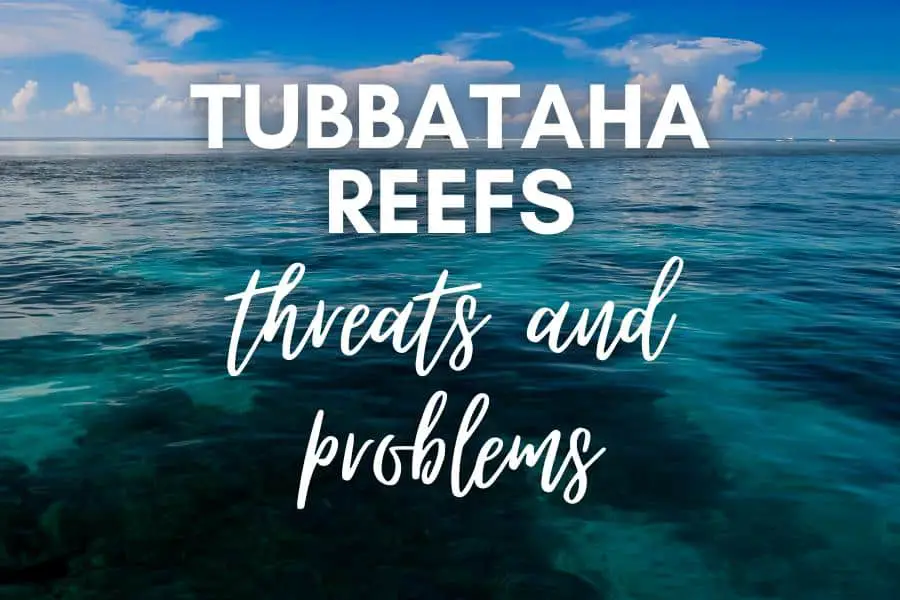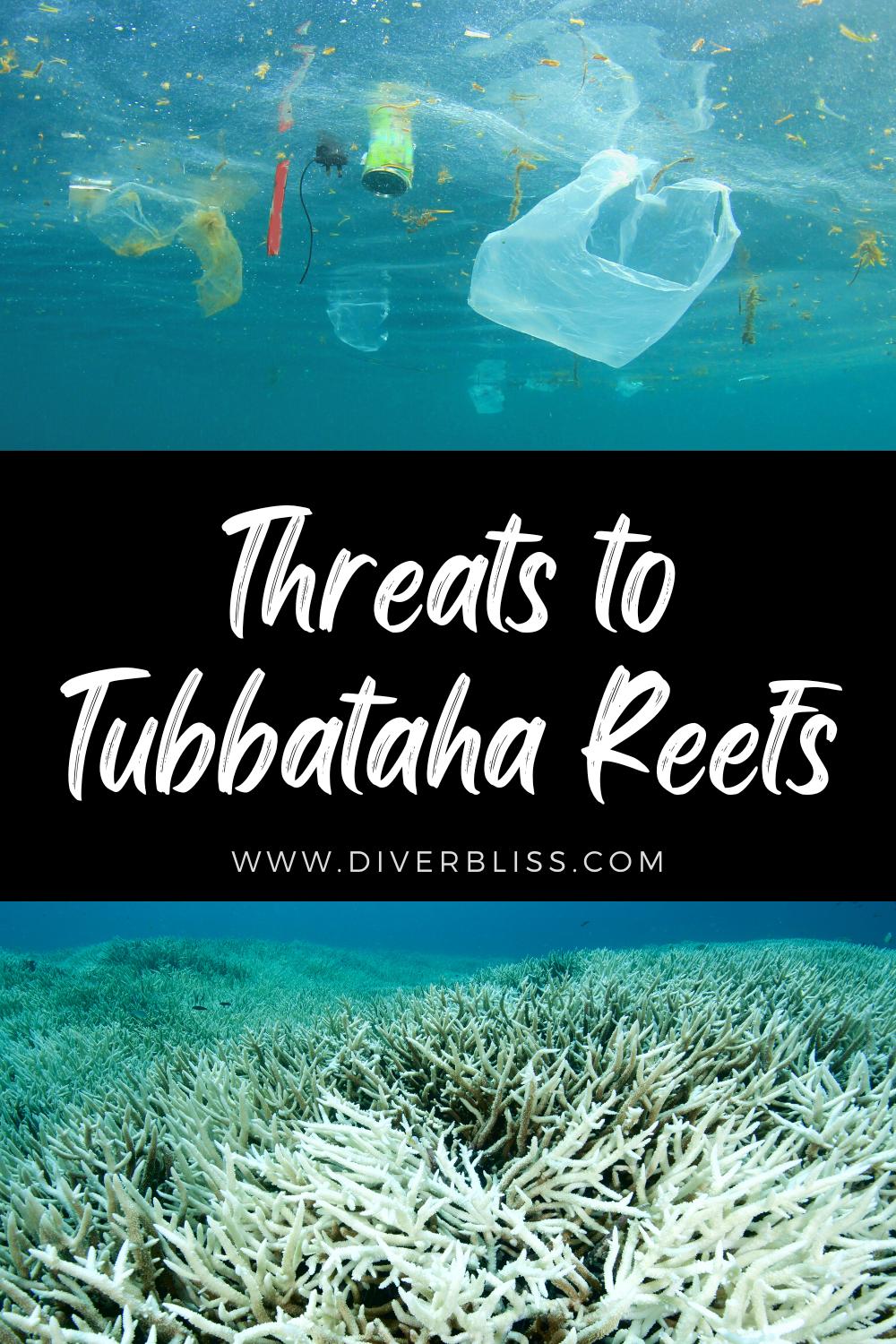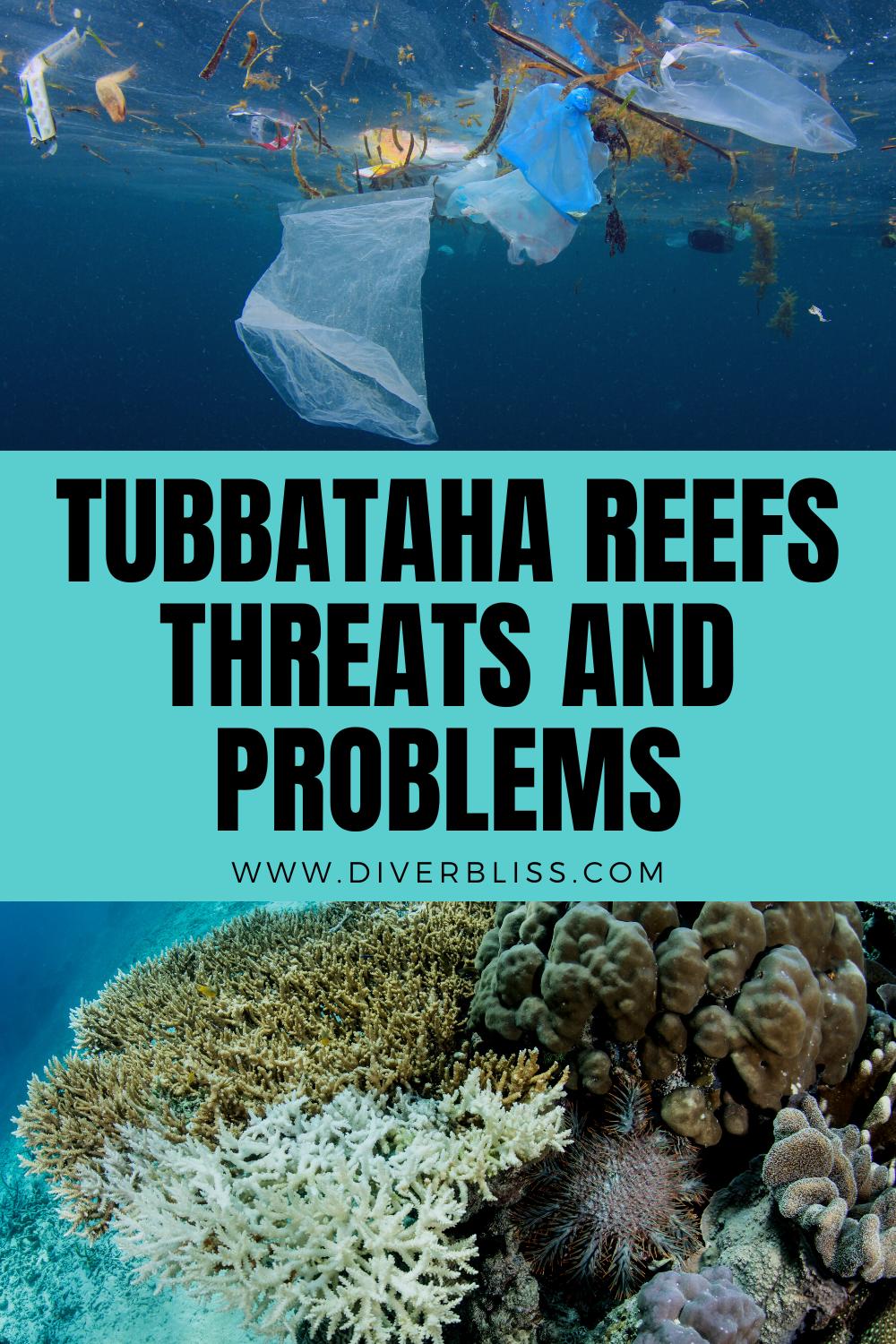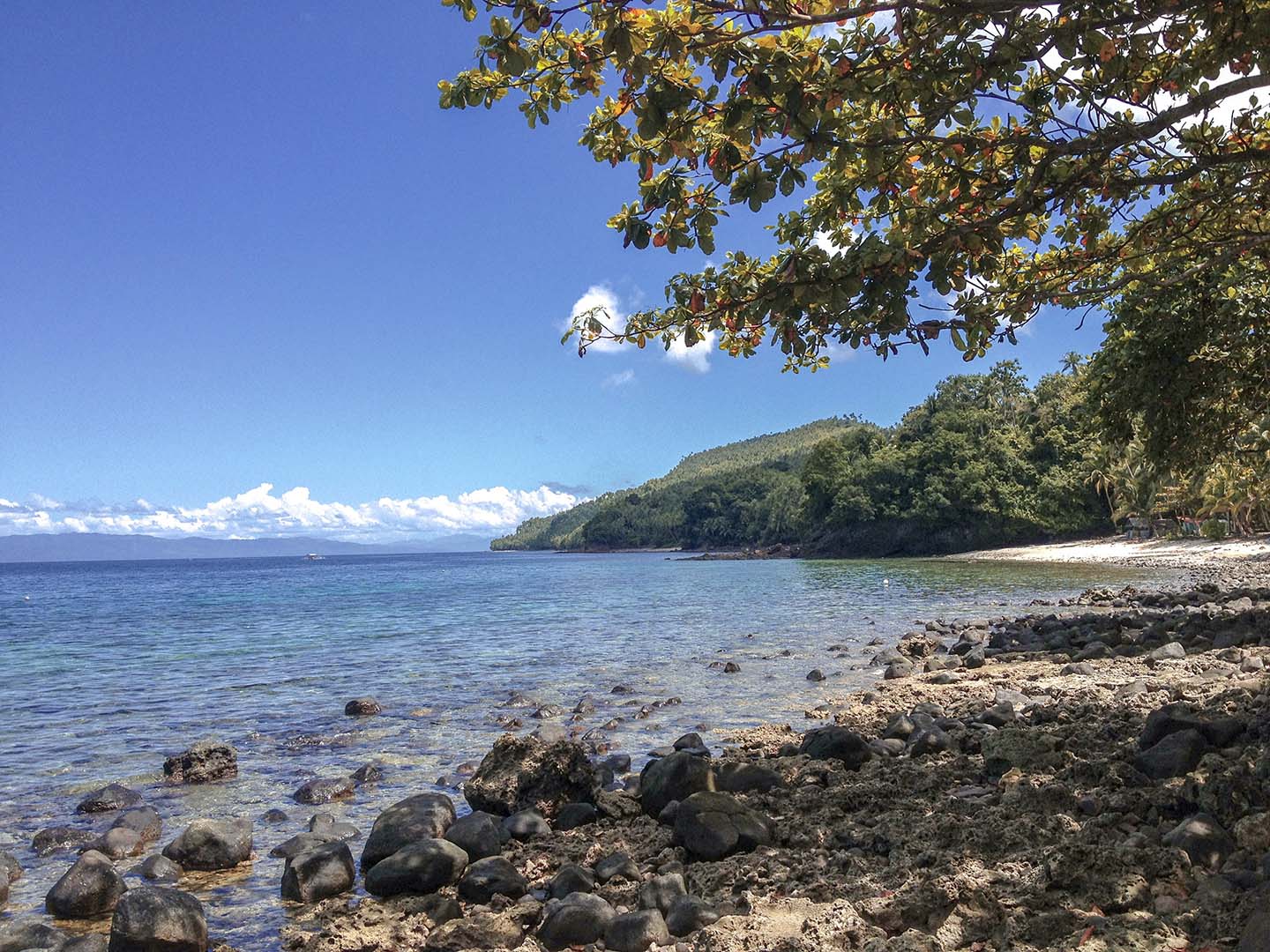
Tubbataha Reefs Natural Park is the biggest marine protected area in the Philippines. It sits in the Coral Triangle which is considered to be one of the most biodiverse regions on our planet.
The pristine waters of Tubbataha reefs are teeming with life. It is home to more than 600 species of fish, 80 coral genera, 13 species of cetaceans, 19 species of rays and sharks, two species of marine turtles, and at least seven resident species of seabirds.
Despite its remote and isolated location in the middle of Sulu sea, Tubbataha Reefs constantly faces various ocean problems that could lead to its degradation. These threats to Tubbataha Reefs include but are not limited to:
- Plastic and ocean debris
- Destructive or illegal fishing
- Maritime or shipping activities
- Species population outbreaks
- Human activities
- Beach erosions
- Climate change
1. Plastic and ocean debris
Tubbataha Reef is not spared from the global plastic problem. Even if Tubbataha is located far from any island or communities, marine debris has made its way to the park. Ocean currents carry the ocean trash from far away places.
This is a big problem because the marine animals mistake this for food. Plastics and other non-biodegradable materials are ingested by sea life and this can lead to injury or death. It has also been observed that some of the sea birds nest found in Tubbatha already contain plastic material.
To combat this ocean plastic problem, Tubbataha park rangers are tasked to collect the marine debris they find in the beaches and in the water. The plastics are then taken back to Puerto Princesa for disposal.
2. Destructive and Illegal Fishing
It is illegal to fish in Tubbataha reefs but this has not stopped people from entering the marine park and harvesting marine life. Destructive fishing techniques like dynamite fishing or using cyanide solutions have been used within the park.
According to Tubbataha Reef Natural Park, between 2006 and 2011, more than 400 illegal fishermen were caught on the reefs. Unfortunately, because of the sheer size of Tubbataha Reef Natural Park it can sometime be difficult to monitor and look out for these fishermen and poachers.
Although incidents have decline significantly over the years, marine park rangers continue to patrol to keep this threat at bay.
3. Maritime and Shipping Activities
Over the years, Tubbataha has seen significant reef damage from shipping or maritime activities.
For instance, in 2013, the American warship USS Guardian and the Chinese fishing boat Min Ping Yu both ran aground in Tubbataha causing billions of dollars in damages. Incidents like this can kill marine life and destroy habitats that took hundreds of years to build.
The presence of shipping vessels and increased maritime traffic within the park can negatively affect its inhabitants. Toxic chemical or oil spills from ships can kill marine life in Tubbataha reefs. Noisy engines can scare away creatures that are seeking refuge in the park.
Tubbataha liveaboards can be disruptive as well and if they are not careful they can contribute to noise pollution and reef damage as well.
While there are buffer zones and maritime traffic is highly regulated by the park, accidents can still happen especially when you are in the middle of the sea.
4. Species population outbreaks
In June 2009, some locations within Tubbataha Reefs Natural Park were observed to have high numbers of crown-of-thorns starfish (Acanthaster planci).
Crown of Thorns starfish also known as COTS are natural predators that eat corals. They play an important role in creating balance in the ecosystem. However, if their population drastically increases, they can consume large areas in a matter of weeks.
Outbreaks like this usually happen when there is an imbalance in the reef ecosystem. In the case of COTS outbreaks, there could be overfishing of the species that feed on the crown of thorns. For instance, the gastropod triton’s trumpet (Charonia tritonis) which is known to eat COTS could be fished out or poached resulting to low population densities.
Another example of species population outbreaks that could be problematic are Drupella. These marine snails can be a threat to Tubbataha because they feed exclusively on reef-building corals. High population densities of Drupella can be a huge problem for Tubbataha if left unchecked.
Outbreaks like these can alter the basic structure of the reef. These predators can quickly eradicate the foundation on which Tubbataha was built.
Constant monitoring and immediate response are essential in safeguarding Tubbataha Reefs from ecosystem imbalances such as these.
5. Human Activities
Tourism plays a key role in the conservation of Tubbataha, but this can be a double edged sword.
On one end, the park entrance fees provide the necessary funds to manage and patrol Tubbataha Reefs Natural Park. Tourists who are diving in Tubbataha contribute a significant amount towards the reefs’ protection, educational campaigns, and increasing awareness about Tubbataha.
On the other end, having tourists in Tubbataha can also be a threat or a problem. The presence of humans will always have an impact on the environment. While the park’s ranger and management regulates the people going in and out of the park and the activities in Tubbataha, it is not always guaranteed that visitors will follow the rule and regulations.
There will always be terrible divers who can end up crashing into the corals and destroying them. Some divers will misbehave and might touch or harass marine life. Unfortunately, not all divers who visit Tubbataha will have an ecological mindset.
6. Beach Erosion
Another threat Tubbataha Reef is facing is the degradation of the beaches found within the park. Aside from the marine species underwater, Tubbataha is home to several seabird species and sea turtle species.
The Bird Islet of Tubbataha is an important seabird roosting area for six resident breeding species – Brown Booby, Red-footed Booby, Great Crested Tern, Sooty Tern, Brown Noddy, and Black Noddy. The beaches also serve as a nesting ground for Hawksbill and Green sea turtles.
In 1911, it was recorded that the Bird Islet was 60,000 square meters. In a land survey done in 2020, it was recorded to be 19,000 square meters. In just over a century, the area has been reduced to less than 2/3 of its original size.
Beach erosion is a very troubling issue in Tubbataha Reefs as this could threaten the very existence of the seabird and sea turtles that reside in the park.
7. Global Warming and Climate Change
Finally, the biggest threat to Tubbataha reefs is global warming and climate change.
“Global warming refers only to the Earth’s rising surface temperature, while climate change includes warming and the “side effects” of warming—like melting glaciers, heavier rainstorms, or more frequent drought. Said another way, global warming is one symptom of the much larger problem of human-caused climate change.” – Climate.gov
The ocean absorbs 25 percent of all carbon dioxide emissions and captures 90 percent of the excess heat generated by these emissions. This essentially warms the ocean and has cascading effects like ocean acidification, ice caps melting and sea levels rising at alarming rates.
Warmer sea temperatures and ocean acidification can stress corals and result in massive coral bleaching episodes. While bleached corals can recover, it can also lead to their death. When this happens the entire reef system can collapse.
This is an issue that threatens Tubbataha as well as the entire planet. Our lives are so interconnected with the oceans that our food source, livelihood, and very existence can be at risk.
How can you help Tubbataha Reefs Natural Park?
While the park is carefully managed by Tubbataha Management Office and its rangers, the protection and safe-keeping of Tubbataha Reefs Natural Park is everyone’s responsibility. If you like to help, protect this underwater paradise, here are some w
Donations in cash or kind remain the most immediate way to help Tubbataha Reefs Natural Park. Money is always needed to make sure Tubbataha is protected.
Tubbataha’s caretakers also need to be paid so they can watch over Tubbataha 24/7. Rangers need funds for smaller expenditures like food, uniforms, medical, and communication especially when they are stationed in the middle of nowhere.
Partnership programs with groups, companies, or organizations are also welcome. If you are looking for a fundraising beneficiary or corporate social responsibility (CSR) project, you can make Tubbataha Reef your partner.
Volunteers offering time and skills can also do much to help in the conservation of Tubbataha. If you have visited Tubbataha, you can help create awareness about Tubbataha and advocate for its protection.
If you are going scuba diving in Tubbataha, make sure that you follow all the rules and regulations in the park. Visitors, dive professionals, and liveaboard crew should report violators to Tubbataha rangers and management for immediate action.
You can also help Tubbataha, by saying no to plastic and reducing your carbon emissions. Doing so will help not just Tubbataha but also our planet.
Do you have Pinterest? Pin this for later or share this post to a friend to create awareness on the problems Tubbataha Reefs may be facing.


What is one thing you can do to help Tubbataha Reefs combat these threats and problems? Leave a comment below!
